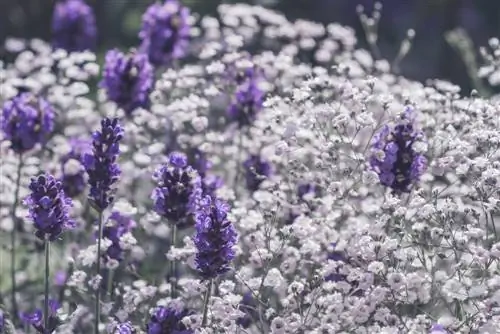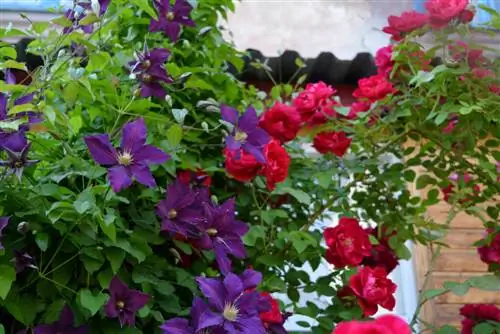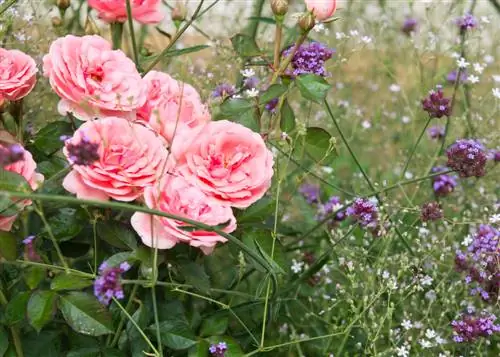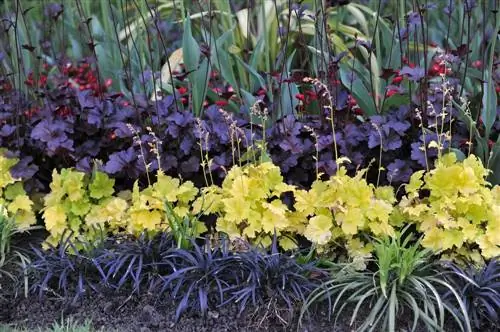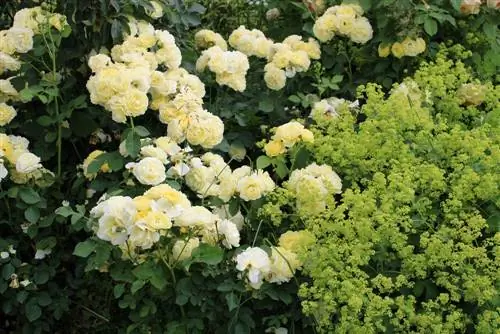- Author admin [email protected].
- Public 2023-12-16 16:46.
- Last modified 2025-01-23 11:22.
It rises gracefully and enchants with its elf-like, delicate star blossoms. They seem to literally float and give the expression of numerous other plants in the area something charming and fragile. But which plants really go well with gypsophila?
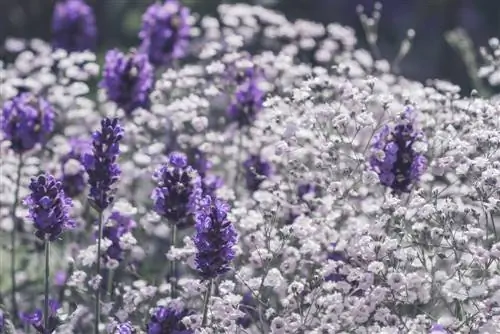
Which plants can I combine gypsophila with?
Gypsophila harmonizes best with plants of similar height and location requirements. Popular combinations include lavender, feather grass, phlox, lilies, ornamental sage, delphiniums, globe thistles and roses. In the bouquet it is a valued companion for roses, gerberas, daisies and chrysanthemums.
What factors should you consider when combining gypsophila?
To underline the character of gypsophila, you should consider the following factors when planning the combination:
- Flower color: white or pink
- Flowering time: June to September
- Site requirements: sunny, calcareous and permeable soil
- Growth height: up to 100 cm
The extremely delicate appearance rises up to 100 cm high, which is why gypsophila harmonizes best with similarly tall plants.
Consider the location requirements of gypsophila. Plants that prefer to grow in the shade are completely unsuitable as partners for gypsophila.
The unbiased white to pink of the gypsophila flowers matches the color of many other plants. You can set specific contrasts or create a color balance.
Combine baby's breath in the bed or in the bucket
With its companion plants, gypsophila can become the most wonderful composition in the garden bed. It blends magically beautifully into the background of flowering perennials, which appear rather static and heavy. Its neutral and rather simple shape makes it an uncomplicated companion perennial. In addition, gypsophila enriches the presence of ornamental grasses that have similar location requirements. In principle, however, it is advisable to plant gypsophila behind more colorful and tone-setting plants.
Gypsophila can be beautifully represented with the following accompanying plants:
- Lilies
- Phlox
- ornamental sage
- Lavender
- larkspur
- Globe Thistles
- Feather grass
- Roses
Combine gypsophila with lavender
The lavender and gypsophila like a location in full sun on a rather dry and well-drained substrate. With its compact stature, the lavender should find its place in front of the gypsophila. In its back, the graceful gypsophila finally acts as a loosening effect and is able to play attractively around the violet flower spikes of the lavender.
Combine gypsophila with feather grass
The combination of gypsophila and feather grass could hardly seem more airy. The feather grass with its long flower spikes drifts around in the wind, while the gypsophila with its tiny flower stars creates bright reflections. This combination looks most impressive in groups and in the middle or back of the bed.
Combine baby's breath with phlox
The almost tangible heaviness of the phlox is given something special by the gypsophila. It is recommended to plant the phlox in front of the gypsophila and ideally choose a giant gypsophila for the combination. Even different varieties of phlox don't seem tasteless if gypsophila is allowed to play along.
Combine baby's breath as a bouquet in the vase
Gypsophila is probably best known as an accessory in bouquets of flowers. As such, it is not only versatile, but one thing in particular: enriching. All bouquets in the vase can be visually improved with gypsophila. Gypsophila is often used to fill gaps or provide contrast in rose bouquets, for example. A bouquet of roses could hardly be more romantic
- Roses
- Gerbera
- Daisies
- Chrysanthemums
- Prairie Gentian
- Bluebells

